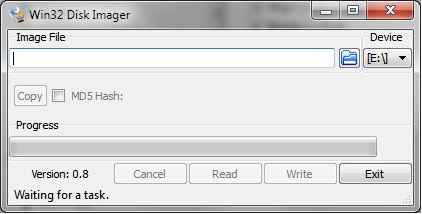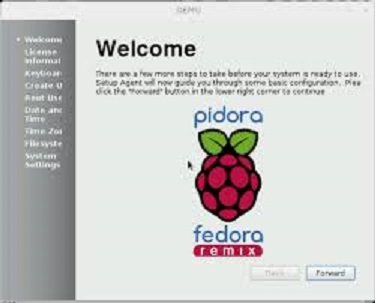Difference between revisions of "Install Amahi 7 on a Raspberry Pi"
m |
|||
| Line 1: | Line 1: | ||
<!-- | <!-- | ||
| − | This page is | + | This page is created automatically by a script. |
This part is commented and shall not show | This part is commented and shall not show | ||
--> | --> | ||
| − | <!--At the top of the page can be | + | <!--At the top of the page can be visible one of the following tags..--> |
{{WorkInProgress}} | {{WorkInProgress}} | ||
<!--{{NeedsUpdate}}--> | <!--{{NeedsUpdate}}--> | ||
| Line 10: | Line 10: | ||
<!--{{NeedsDelete |[[Main Page]]}}--> | <!--{{NeedsDelete |[[Main Page]]}}--> | ||
<!--Please remove or place comment accordingly--> | <!--Please remove or place comment accordingly--> | ||
| − | |||
'''This page is being edited actively and a lot of sections are missing currently; feel free to help improving it.''' | '''This page is being edited actively and a lot of sections are missing currently; feel free to help improving it.''' | ||
| Line 18: | Line 17: | ||
Amahi can be installed and running under development on a Raspberry Pi. | Amahi can be installed and running under development on a Raspberry Pi. | ||
I have only managed to get the core platform running so there are no applications tested. | I have only managed to get the core platform running so there are no applications tested. | ||
| − | |||
| − | |||
This page describes how to get things working. | This page describes how to get things working. | ||
Note that due to the immature state of the code installing it is mainly interested for people who want to get a feeling of it, help in testing and resolving issues. | Note that due to the immature state of the code installing it is mainly interested for people who want to get a feeling of it, help in testing and resolving issues. | ||
| − | |||
=Known Issues= | =Known Issues= | ||
| Line 30: | Line 26: | ||
* some Ruby gems will not install without some manual work before. | * some Ruby gems will not install without some manual work before. | ||
| + | * Nokogiri the An HTML, XML, SAX, & Reader parser with the ability to search documents via XPath. must use '--use-system-libraries'. | ||
=Requirements= | =Requirements= | ||
| Line 74: | Line 71: | ||
Complete the Pidora welcome screen. | Complete the Pidora welcome screen. | ||
| + | |||
| + | # Set user name. | ||
| + | # Set location. | ||
| + | # Set root password. | ||
| + | # Set location. | ||
| + | # Do not set a swap file. | ||
| + | # Set hostname (leave as default). | ||
| + | # Set interface as text. | ||
| + | |||
| + | let Pidora finish installing and reboot this completes the Pidora install | ||
| + | |||
[[File:Pidora-Welcome-Screen.jpg|frame]] | [[File:Pidora-Welcome-Screen.jpg|frame]] | ||
| + | |||
| + | |||
| + | |||
| + | |||
| + | |||
| + | |||
| + | |||
| + | |||
| + | |||
| + | |||
| + | |||
| + | |||
| + | |||
| + | |||
| + | |||
| + | |||
| + | |||
| + | |||
| + | |||
| + | |||
| + | |||
| + | |||
| + | Install Amahi 7 core platform | ||
| + | # login as root. | ||
| + | ##enter the root password (not the one from the first user) | ||
| + | ##<code>yum groupinstall 'Development Tools'</code>, or for a shorter install do: | ||
| + | ##* <code>yum -y install make git mysql-devel sqlite-devel mysql-server gcc-c++ tar rpm-build</code> | ||
| + | ##* <code>yum -y install ruby ruby-devel libxml2-devel libxslt-devel</code> | ||
| + | ##<code>systemctl start mysqld.service</code> | ||
| + | ## <code>gem install bundler</code> | ||
| + | # exit the root user and use a regular user. you will need to reinstall fedora if you skip this step. | ||
| + | # we suggest you create a new folder to put the amahi development code, then in it run: | ||
| + | # <code>git clone https://github.com/mattman73/platform.git</code> | ||
| + | # <code>cd platform</code> | ||
| + | # <code>bundle config build.nokogiri --use-system-libraries</code> | ||
| + | # <code>bundle install</code> (this will take a while and install all the necessary gems) | ||
| + | # <code>rake db:create</code> this will ask for the mysql root password with a prompt ">" | ||
| + | #* if this is a fresh install, your mysql server probably does not have a password, so just press Enter | ||
| + | #* if you set a password for the mysql root user, type it. Note that it will show a warning and echo the password! | ||
| + | #* if you are re-running this step and the db is already created, you can run rake db:drop first then create it again | ||
| + | # <code>rake db:migrate</code> (this will get the database up to snuff) | ||
| + | # <code>rake db:seed</code> (this will get a basic database setup) | ||
| + | # rails s (this will start the rails server) | ||
| + | |||
| + | The development dashboard can be reached with your favorite browser at: | ||
| + | |||
| + | <code>http://localhost:3000</code> | ||
| + | |||
| + | There is an initial user created called <code>admin</code> with password <code>admin</code>. Login should work out of the box. | ||
| + | |||
| + | To stop the development server, just hit <code>Ctrl+C</code> in the terminal where you started the server. | ||
| Line 143: | Line 202: | ||
<!--Your text above this line--> | <!--Your text above this line--> | ||
<!--This page must bellong to one of the following categories please remove comment--> | <!--This page must bellong to one of the following categories please remove comment--> | ||
| + | |||
[[Category:Fedora]] | [[Category:Fedora]] | ||
[[Category:Platform]] | [[Category:Platform]] | ||
[[Category:ARM Hardware]] | [[Category:ARM Hardware]] | ||
Revision as of 20:57, 13 August 2014

|
Work In Progress |
|---|---|
| This article is currently undergoing major expansion or restructuring. You are welcome to assist by editing it as well. If this article has not been edited in several days, please remove this template. |
This page is being edited actively and a lot of sections are missing currently; feel free to help improving it.
Current state
Amahi can be installed and running under development on a Raspberry Pi. I have only managed to get the core platform running so there are no applications tested.
This page describes how to get things working. Note that due to the immature state of the code installing it is mainly interested for people who want to get a feeling of it, help in testing and resolving issues.
Known Issues
Feel free to add issues here. If you add an issue an email to the amahi developers list with a more detailed description and/or a bug report in our bugzilla is also greatly appreciated.
- some Ruby gems will not install without some manual work before.
- Nokogiri the An HTML, XML, SAX, & Reader parser with the ability to search documents via XPath. must use '--use-system-libraries'.
Requirements
- A copy of Pidora-2014-R2-1 can be download from the Raspberry download website. http://www.raspberrypi.org/downloads/
- A Raspberry Pi model b or b+.
- A 8GB SD card or bigger.
- A PC to copy the Pidora image onto the SD card.
Installation
Installing Pidora image on to a SD card.
The easiest way to install the Pidora is to use the win32 disk imager program. download form here http://sourceforge.net/projects/win32diskimager/
Needed:
- A computer with at least 5 GB of free disk space, running Windows 7.
- An SD or SDHC card, with a capacity of 4GB or more. (Good-quality class 4 cards usually work well). You may use a MicroSD card with an adapter.
- An SD/SDHC card writer, either built in to the computer or connected to a USB port.
Run the win32 disk imager.
- Click the folder icon, locate the Pidora-2014-R2-1.img file that you download early.
- Check the 'Device' to see if the correct letter that corresponds to your SD card letter.
- Click on 'Write'.
When Win32 Disk imager has finished place the SD card in the Raspberry Pi.
Complete the Pidora welcome screen.
- Set user name.
- Set location.
- Set root password.
- Set location.
- Do not set a swap file.
- Set hostname (leave as default).
- Set interface as text.
let Pidora finish installing and reboot this completes the Pidora install
Install Amahi 7 core platform
- login as root.
- enter the root password (not the one from the first user)
yum groupinstall 'Development Tools', or for a shorter install do:yum -y install make git mysql-devel sqlite-devel mysql-server gcc-c++ tar rpm-buildyum -y install ruby ruby-devel libxml2-devel libxslt-devel
systemctl start mysqld.servicegem install bundler
- exit the root user and use a regular user. you will need to reinstall fedora if you skip this step.
- we suggest you create a new folder to put the amahi development code, then in it run:
git clone https://github.com/mattman73/platform.gitcd platformbundle config build.nokogiri --use-system-librariesbundle install(this will take a while and install all the necessary gems)rake db:createthis will ask for the mysql root password with a prompt ">"- if this is a fresh install, your mysql server probably does not have a password, so just press Enter
- if you set a password for the mysql root user, type it. Note that it will show a warning and echo the password!
- if you are re-running this step and the db is already created, you can run rake db:drop first then create it again
rake db:migrate(this will get the database up to snuff)rake db:seed(this will get a basic database setup)- rails s (this will start the rails server)
The development dashboard can be reached with your favorite browser at:
http://localhost:3000
There is an initial user created called admin with password admin. Login should work out of the box.
To stop the development server, just hit Ctrl+C in the terminal where you started the server.


